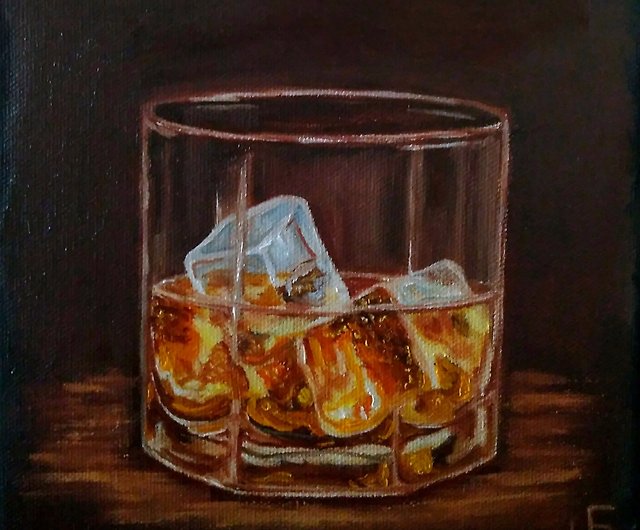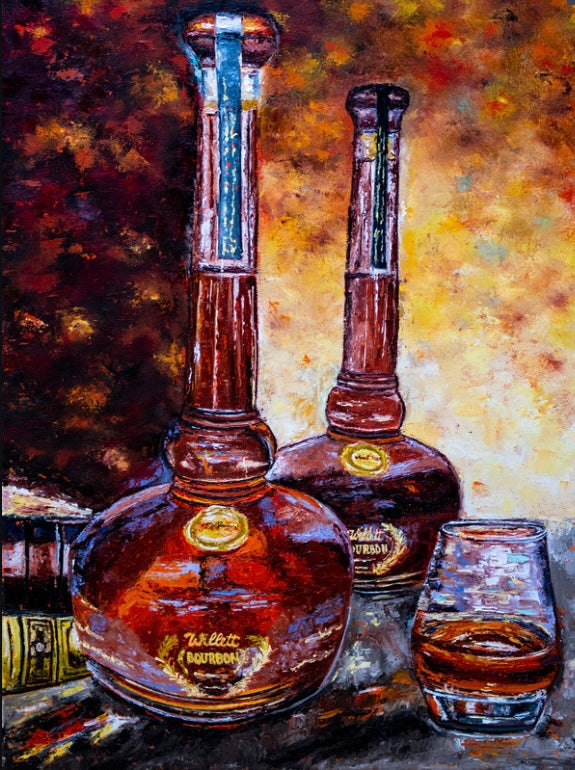Limited Edition Bourbon Art: Why Collectors Are Gathering to One-of-a-kind Finds
Limited Edition Bourbon Art: Why Collectors Are Gathering to One-of-a-kind Finds
Blog Article
Catching the Essence of Bourbon Art Through One-of-a-kind Aesthetic Representations and Designs
The art of scotch extends beyond the fluid itself, manifesting via a selection of visual representations that envelop its fabled heritage and workmanship. What stays to be revealed is just how these evolving styles mirror not only the bourbon itself yet also the altering landscape of creative analysis. Bourbon Art.
The History of Scotch Art
As bourbon manufacturing spread, so as well did the need to elevate its experience with art. From the detailed engravings on early barrels to the elaborate labels of modern-day bottles, each aspect shows an unique creative vision, acting as an aesthetic narrative of the scotch's heritage.
In the 19th and 18th centuries, the surge of the industrial transformation better boosted whiskey art, resulting in ingenious product packaging and advertising that captured consumer interest. Musicians and designers began explore looks, imbuing whiskey-related images with symbolic definitions that conveyed notions of practice, workmanship, and area.
Today, bourbon art remains to evolve, mixing traditional methods with modern art kinds. Realism Art. This recurring discussion in between the spirit and its graph highlights the enduring bond between bourbon and society, enhancing the general experience for lovers worldwide
Iconic Bottle Designs
While several variables add to the appeal of scotch, renowned container layouts play a critical duty in forming customer understanding and enhancing the overall experience. The aesthetic discussion of whiskey containers is not simply an aesthetic consideration; it functions as a bridge between the product and the customer, stimulating emotions and setting assumptions.
Unique shapes, products, and closures can elevate a bourbon brand name's identity, making it instantly well-known on congested shelves. The classic Glenfiddich bottle, with its classy conical shape, shares a feeling of tradition and workmanship, while the vibrant, modern-day design of the Balvenie container reflects development and refinement. The use of colored glass or distinct textures can suggest the top quality and character of the bourbon within.
Renowned designs often include elements of social heritage, signifying the brand's history and link to its origins. Brands like Jack Daniel's use an uncomplicated, robust design that reverberates with its American bourbon heritage. Ultimately, the impact of bottle style expands past mere functionality; it encapsulates the significance of the brand name, welcoming customers to explore and indulge in the abundant tapestry of bourbon society.
Label Artwork and Branding
Bottle designs frequently set the stage for what customers can anticipate, however label artwork and branding play a just as substantial duty in interacting a scotch's identity. The label serves as the first factor of call in between the customer and the product, enveloping the significance of the scotch within its aesthetic aspects.
Efficient label art work incorporates images, color, and typography to create a story that reverberates with the brand's heritage and target audience. A tag featuring vintage fonts and detailed pictures might evoke a feeling of custom and craftsmanship, appealing to lovers. On the other hand, vibrant colors and modern-day style components Check Out Your URL may bring in a younger group seeking innovation and enjoyment.


Photography and Visual Storytelling
Catching the significance of whiskey with digital photography and visual storytelling is an art type that raises the brand name experience. This tool goes beyond mere product representation, diving right into the intricate narratives that surround each bottle. By employing compelling imagery, digital photographers can evoke emotions that resonate with customers, inevitably forging a deeper link to the scotch brand name.
Aesthetic narration in scotch digital photography commonly makes use of rich structures, illumination, and structure to highlight the special attributes of the spirit. The interaction of light and darkness can emphasize the brownish-yellow tones of whiskey, while the choice of background elements-- such as rustic barrels or elegant glassware-- can reinforce the brand name's heritage or way of living organizations.
In addition, recording the ritualistic facets of bourbon intake, from the putting to the tasting, invites viewers right into a sensory experience, enabling them to visualize the tastes and aromas that await. Each picture not just showcases the product but additionally tells a story of workmanship, custom, and the minutes that scotch can enhance - Whiskey Art. Therefore, photography comes to be an effective tool in articulating the identification of whiskey brands, placing them within the wider cultural landscape
Arising Patterns in Whiskey Art
The evolution of bourbon art is increasingly formed by modern trends that reflect broader societal changes and consumer choices. This change not only highlights the value of sustainability but likewise boosts the narrative surrounding bourbon production.
Furthermore, electronic art has actually surged in popularity, permitting ingenious representations of bourbon. Musicians are leveraging technology to craft immersive experiences, such as enhanced fact installments that engage customers and give a deeper understanding of whiskey's cultural relevance. This fad also reaches social media sites systems, where aesthetically striking content garners interest and promotes neighborhood amongst fanatics.
Furthermore, partnerships between scotch brands and artists are ending up being a lot more typical. These collaborations generate limited-edition product packaging designs and exclusive artworks that celebrate both the craftsmanship of whiskey and the click to investigate creativity of artists. As scotch art continues to progress, these arising fads will certainly shape its future, fostering a dynamic intersection of culture, sustainability, and technology within the bourbon area.
Verdict
Finally, the art of whiskey encompasses a diverse array of visual representations that show its abundant heritage and craftsmanship. From renowned bottle designs and elaborate label art work to engaging digital photography, each element adds to a more comprehensive story that improves the consumer's experience. As arising fads, such as digital art and sustainability, proceed to shape this artistic landscape, the complex identity of bourbon continues to be a withstanding source of cultural link and expedition.

In conclusion, the art of scotch encompasses a diverse selection of aesthetic representations that reflect its abundant heritage and workmanship.
Report this page